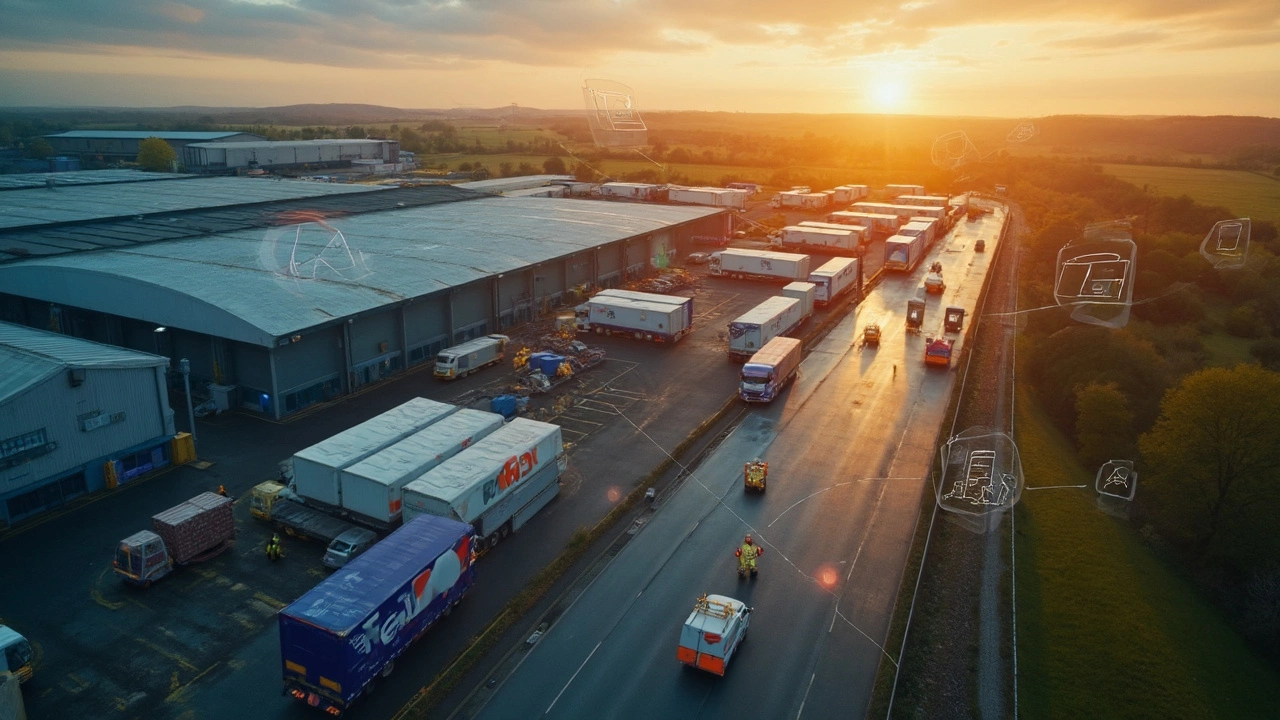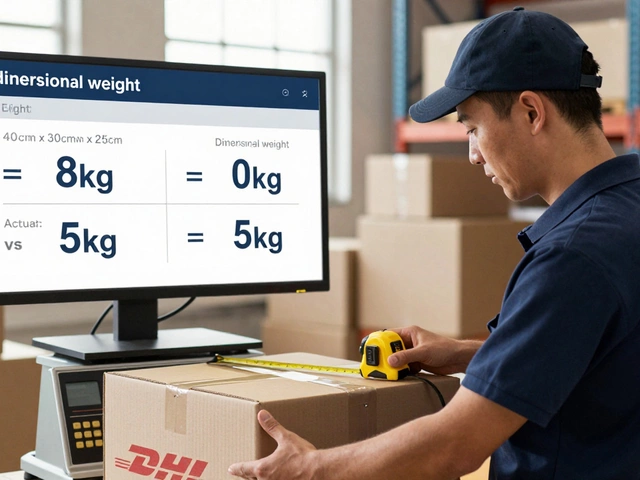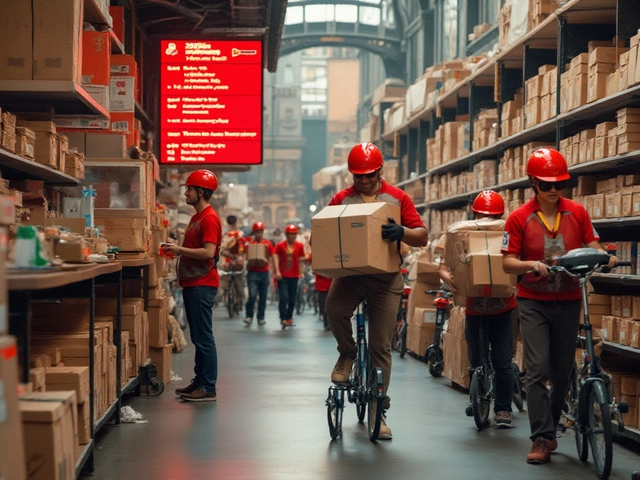Confused about 3PL and 4PL and where FedEx lands? You're not alone. Companies throw around these terms every day, but there’s a big gap between the two—and it matters if you’re running a business or planning your supply chain. 3PL stands for third-party logistics. It means a company, like FedEx, handles just parts of your logistics: moving packages, storing goods, maybe helping with returns. 4PL is bigger. That’s full-on supply chain management—they handle different carriers, optimize tech, and basically become your logistics brain.
If you’re searching for better ways to ship, track, and manage your inventory using software, knowing what level of logistics partner you need is the trick. You can’t plug effective software into a messy, unclear workflow. That’s why understanding the FedEx playbook is key.
- What Do 3PL and 4PL Actually Mean?
- The Real Role of FedEx: 3PL or 4PL?
- FedEx in the Logistics Software World
- How to Choose the Best Fit for Your Business
What Do 3PL and 4PL Actually Mean?
People bump into the terms 3PL and 4PL all the time, especially when talking logistics software or shipping partners like FedEx. They’re not just buzzwords—they sort your options fast if you want smooth deliveries and inventory management.
3PL stands for third-party logistics. That’s when a business brings in an outside company to handle certain supply chain jobs. Think transportation, warehousing, or even order fulfillment. Your company manages product flow, but someone else does the heavy lifting. Famous 3PL tasks include:
- Shipping stock from point A to point B
- Storing products in secure warehouses
- Processing online orders and returns
- Packing and kitting goods for end customers
4PL, or fourth-party logistics, is like handing over your entire logistics game plan. 4PL companies act as consultants and managers. They don’t just move goods; they set up your supply chain from scratch, choose which 3PLs to use, connect your logistics software, and check that everything runs as efficiently as possible. It’s the difference between hiring a moving van and hiring someone to sell your house, plan your route, and organize the whole move for you.
Here’s a snapshot to compare the two:
| 3PL | 4PL | |
|---|---|---|
| Who runs it? | Handles parts of logistics (shipping, storage) | Manages the whole supply chain, often hires other 3PLs |
| Scope | Specific tasks | Big-picture, end-to-end solutions |
| Tech & Software | Usually supports operation-level integration | Connects software across partners, focuses on data flow |
| Your Role | You still manage some logistics | They manage everything; you just get updates |
Most small to mid-sized businesses start with a 3PL—they want to offload tasks without losing control. Big brands or fast-growing startups usually turn to 4PL partners when they need someone to glue multiple suppliers, shipping options, and tech tools together.
When you shop for FedEx or other solutions, it pays to know which model will actually fix your supply chain headaches. The tech and logistics support you get will look very different depending which one you hire.
The Real Role of FedEx: 3PL or 4PL?
The labels 3PL and 4PL mean different things in logistics, and understanding where FedEx fits can save you a ton of confusion (or even cash). Let’s break down exactly what FedEx does and doesn’t do.
First, FedEx is mainly known as a third-party logistics provider—3PL. It’s actually one of the world’s biggest 3PLs. They’ll take care of stuff like shipping, freight, warehousing, fulfillment, returns, even customs if you’re sending something overseas. So if you need a service to pick up, store, or move your packages, FedEx is right in its element. Their name pops up in almost every logistics conversation for a reason: the scale. FedEx delivered over 6.21 million packages per day in 2023, using an enormous global network.
But what about 4PL? FedEx doesn’t really handle that. As a 4PL, a provider actually manages your whole supply chain. They pick the 3PLs, manage technology, and optimize all your logistics strategies—they kind of act as your outsourced logistics department. FedEx rarely takes over like that. They focus on the physical movement of packages instead of running the entire operation end-to-end. Sure, they offer some tech tools and decent integrations, but it’s not the same as a 4PL calling the shots for your supply chain.
If you’re after a 4PL, you’ll want to look at companies that act like consultants and project managers. They’ll use FedEx as one of several shipping companies in your stack, plugging everyone’s info into a central software system for the big picture view.
- FedEx = 3PL (direct shipping, warehousing, fulfillment, returns, customs help)
- Not a 4PL (doesn’t run or optimize your whole supply chain)
So, if you just need a powerful partner for shipping, warehousing, or fulfillment, FedEx works as a 3PL. For someone to coordinate all your logistics partners and technology end-to-end, that’s a 4PL, and FedEx won’t cover all that. Use this to match your business needs to the right provider, and you won’t be left guessing who's handling what.

FedEx in the Logistics Software World
When people think about FedEx, they picture delivery trucks and tracking numbers. But behind the shipping labels, FedEx is a major player in logistics software. They provide a whole range of tech tools, not just for their own team, but for businesses that want to keep up with fast supply chains.
FedEx offers several platforms. FedEx Ship Manager, for example, lets you print labels, manage shipments, and track packages in one place. For bigger operations, there’s FedEx Web Services—basically, it can plug right into e-commerce software so orders, tracking, and returns talk to each other automatically. This means fewer mistakes and less manual input.
The real kicker is FedEx’s integration with hundreds of inventory management and order platforms. Tools like NetSuite, Shopify, and QuickBooks can talk to FedEx picking, packing, and tracking tools thanks to easy-to-set-up connections. If you need to batch-print 500 shipping labels in an hour, the right FedEx software add-on does it without headaches.
Here’s a quick look at how businesses use FedEx logistics software to step up their game:
- Live Tracking: Syncs with your system so customers get real-time package updates—no more lost boxes.
- Automated Shipping Rules: Set up triggers for things like weight, region, or express needs and let FedEx handle the rest.
- Returns Management: Streamlines reverse logistics so customers can initiate returns with a click, and you handle less hassle.
- Data Insights: Pull up reports on shipping times, costs, and problem zones so your team makes better calls on carriers and zones.
FedEx moves nearly 15 million packages a day, powered by software that crunches numbers, routes, and customer requests in the background. In the world of logistics software, FedEx has invested in AI for route planning and uses APIs to spread their smarts across e-commerce and warehouse partners. This isn’t just about moving boxes—it’s about running smarter from the first click to the customer’s door.
How to Choose the Best Fit for Your Business
There’s no single answer for every company. Start by asking: What do you really need from your logistics partner? If your main headache is shipping, warehousing, or getting orders out the door fast, a 3PL like FedEx probably checks the boxes. They’re built for businesses that want reliable delivery, tracking tools, and access to lots of carrier options all in one place.
But if you’re looking to hand off bigger decisions—like picking the best shipping tactics, working with multiple providers, and completely optimizing your supply chain—it might be time for 4PL support. Here, you’re basically letting someone else quarterback the entire supply operation, sometimes using their own or outside logistics software to make everything run smoother.
Here are a few quick steps to help you figure out what fits:
- List your must-haves. Is it better tracking? Lower shipping costs? Fewer lost packages? Nail this down first.
- Pay attention to your business size. Small to mid-size sellers often stick with 3PL services, but larger retailers or those scaling up can gain more with 4PL solutions.
- Check your software needs. Want all your inventory and shipments in one dashboard? Ask if the 3PL’s or 4PL’s logistics software plays nice with your current systems.
- Dig into real-life reviews. See what businesses like yours say about FedEx and competitors—especially when it comes to issue resolution and tech support.
- Look for flexibility. Needs change fast. Try to find a partner that can scale up with you or adapt as your orders spike and drop.
Here's what the market looks like in terms of business adoption to 3PL and 4PL. Check out the estimated split for U.S. businesses managing logistics in 2024:
| Logistics Type | Percentage of Businesses |
|---|---|
| 3PL | 60% |
| 4PL | 18% |
| In-house/Other | 22% |
One last tip: don’t get dazzled by features you’ll never use. Instead, choose what actually helps you get orders from cart to customer. Sometimes, sticking with a trusted 3PL like FedEx offers the right balance of simplicity and speed, especially if your business is growing but not quite ready for 4PL complexity.





